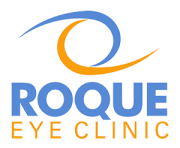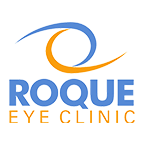Key Learning Points
- What is Herpes Zoster Ophthalmicus? An eye disease is caused by the varicella-zoster virus, which is the same virus responsible for chickenpox and shingles.
- Symptoms to Watch For: Rash, redness, pain, and blurred vision.
- Treatment Options: Antiviral medications, possible corticosteroids, and eye drops.
- Prevention Tips: Vaccination and early treatment of shingles.
Introduction
Herpes Zoster Ophthalmicus (HZO) occurs when the varicella-zoster virus, which causes chickenpox and shingles, reactivates and affects the eye and surrounding areas. This condition is not only painful but can lead to serious eye complications and vision loss if not treated promptly. Understanding the symptoms, treatment options, and preventive measures is crucial for protecting your ocular health.
Understanding Herpes Zoster Ophthalmicus
The Pathophysiology Behind HZO
The varicella-zoster virus remains dormant in nerve tissue after chickenpox and can reactivate years later, leading to shingles. When it reactivates along the ophthalmic branch of the fifth cranial nerve, it causes HZO.
Common Symptoms and Signs
- Rash: Begins as a painful rash on the forehead, scalp, or around the eyes, typically on one side of the face.
- Eye Symptoms: Redness, swelling, pain, blurred vision, and sensitivity to light.
- Other Symptoms: Headache, fever, and fatigue can accompany the primary symptoms.
Diagnosis Techniques
Early diagnosis is essential for effective treatment. Diagnosis typically involves a clinical examination, including corneal staining, visual acuity tests, and imaging studies.
Treatment Strategies
Antiviral Therapy
Antiviral medications such as Acyclovir or Valacyclovir are commonly prescribed to reduce the severity and duration of the infection.
Corticosteroids and Pain Management
Corticosteroids may be used to reduce inflammation, and pain management is often necessary with medications tailored to the individual's pain level.
Ongoing Monitoring and Eye Care
Regular follow-ups are crucial to monitoring the response to treatment and adjusting as necessary, including managing any complications such as secondary bacterial infection.
Preventive Measures
Vaccination
The Shingrix vaccine is recommended for older adults to prevent shingles, including HZO.
Early Treatment
Prompt treatment of shingles and antiviral medication can help prevent the development of HZO.
Frequently Asked Questions
-
Can Herpes Zoster Ophthalmicus lead to permanent vision loss? If not treated promptly, HZO can cause permanent vision impairment or blindness.
-
Is HZO contagious? The virus can be spread to individuals who have not had chickenpox, mostly through direct contact with the rash. The eye itself is not contagious, but the virus from the rash can cause chickenpox in susceptible individuals.
-
Are there any specific groups at higher risk for HZO? Individuals over 50 and those with weakened immune systems are at higher risk.
-
Can children get HZO? While rare, it is possible if they have had chickenpox.
-
How can I tell if I have HZO and not another eye infection? HZO typically presents with a rash around the eye and other symptoms like headache and fever. See an ophthalmologist for an accurate diagnosis.
Conclusion and Take-Home Message
Herpes Zoster Ophthalmicus is a serious eye condition that can severely impact your vision and quality of life. Awareness of the symptoms and early intervention is key to managing HZO effectively. Vaccination and prompt treatment of shingles can significantly reduce your risk of developing HZO. Protect your eye health by staying informed and seeking immediate medical care if you suspect HZO.
BOOK AN APPOINTMENT
It takes less than 5 minutes to complete your online booking. Alternatively, you may call our BGC Clinic, or our Alabang Clinic for assistance.






